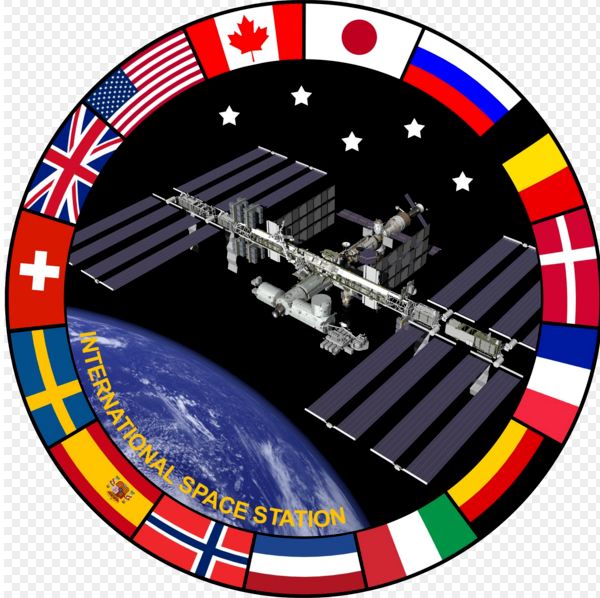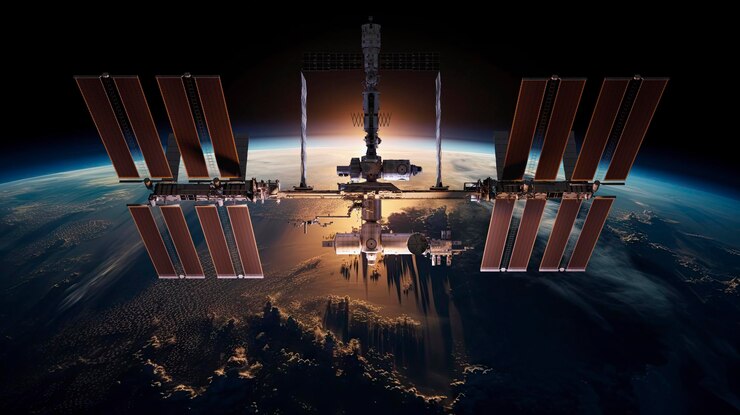“Orbiting Oasis: Exploring the International Space Station Pioneering Role in Science and Technology”

International Space Station
Imagine a place where countries unite, not on Earth, but in the orbiting heavens. This is the International Space Station (ISS), a beacon of international cooperation and scientific endeavor. Launched in 1998, the ISS has since been a home away from home for astronauts from various nations. It symbolizes not just technological prowess but also a rare, peaceful collaboration in space exploration.
A Tapestry of International Collaboration
The ISS is not the brainchild of a single nation. It’s a symphony orchestrated by leading space agencies: NASA (USA), Roscosmos (Russia), JAXA (Japan), ESA (Europe), and CSA (Canada). Each agency brings unique technologies and perspectives, weaving a tapestry of international cooperation. This collaboration goes beyond mere construction; it extends to scientific research, astronaut training, and mission planning.

Life in Microgravity: A Daily Routine Unlike Any Other
Life aboard the ISS is a blend of work and wonder. Astronauts spend their days conducting experiments that can only be done in microgravity, from studying fluid dynamics to observing how plants grow in space. They exercise two hours daily to combat muscle atrophy, a consequence of living in a weightless environment. Even mundane tasks like eating and sleeping become extraordinary experiences in microgravity.
Applications of the ISS
- Scientific Research Laboratory: The ISS’s primary function is to serve as a state-of-the-art lab for scientific research. Experiments conducted in its unique microgravity environment have led to significant advances in physics, biology, astronomy, and other fields. This research often has direct applications on Earth, such as in medicine and environmental science.
- Technological Development and Testing: The ISS provides a platform for testing new space technologies. These include advancements in spacecraft systems, life support systems, and materials that can withstand the harsh environment of space. This testing is crucial for the future of long-duration human and robotic space exploration.
- International Cooperation and Diplomacy: As a collaborative effort of multiple countries, the ISS is a symbol of international cooperation. It fosters diplomatic relations and collaboration between countries in the peaceful exploration of space.
- Education and Outreach: The ISS plays a significant role in educational outreach. It inspires students and researchers around the world in STEM (Science, Technology, Engineering, and Mathematics) fields. Astronauts aboard the ISS often conduct live sessions and experiments to engage with students, promoting space education.
- Observation and Earth Monitoring: Equipped with high-resolution cameras and sensors, the ISS is an excellent platform for Earth observation. It aids in monitoring climate change, natural disasters, and environmental changes, providing valuable data for research and response efforts.

Key Features of the ISS
- Microgravity Laboratory: The ISS orbits Earth in a microgravity environment. This unique setting allows scientists to study phenomena without the interference of Earth’s gravity, providing insights unattainable on the ground.
- International Partnerships: The ISS is a result of collaboration between NASA, Roscosmos, ESA, JAXA, and CSA, along with contributions from other nations. This international partnership is one of its most remarkable features, demonstrating a global commitment to space exploration.
- Modular Design: The station’s modular structure allows for continuous expansion and upgrading. This design makes it adaptable to changing scientific and technological needs.
- Life Support Systems: The ISS is equipped with advanced life support systems that recycle air and water, crucial for sustaining life in space. These systems are continually upgraded to improve efficiency and reliability.
- External Platforms for Experiments: The ISS has external platforms where experiments can be exposed to the vacuum of space. These platforms are critical for testing materials, technologies, and the effects of space radiation.
- Cupola Observation Module: The Cupola is a small module with a set of windows that offers astronauts a panoramic view of Earth and space. It’s not only used for observation but also for controlling the ISS’s robotic arms.
Scientific Haven: Unlocking Mysteries of the Universe
The ISS serves as a unique laboratory orbiting about 400 kilometers above Earth. Here, scientists conduct experiments impossible on Earth’s surface. They study everything from the effects of space on the human body to testing materials and technologies for future space missions. The ISS has been instrumental in research that benefits life on Earth, including advancements in medicine, environmental monitoring, and material sciences.

Glimpses of the Blue Planet: The Astronaut’s Perspective
Astronauts on the ISS experience about 16 sunrises and sunsets each day! They share breathtaking views of Earth, offering us a perspective that few can dream of. These images not only captivate our imagination but also remind us of our planet’s fragility and the importance of environmental stewardship.
The Future of the ISS and Beyond
As the ISS ages, discussions about its future intensify. While some propose commercializing parts of it, others see it as a stepping stone for deeper space exploration, like missions to Mars. The ISS, thus, continues to be a crucial platform for advancing space technology and international cooperation.
A Testament to Human Ingenuity
The International Space Station stands as a testament to what humanity can achieve when nations unite for a common cause. It’s more than a scientific laboratory; it’s a symbol of peace, hope, and the boundless potential of human ingenuity. As we gaze up at the night sky, the ISS reminds us of our small place in the vast cosmos and the incredible feats we can accomplish together.




